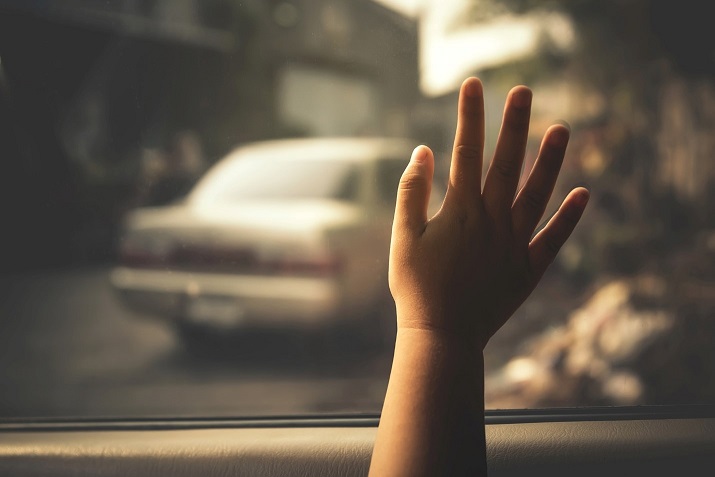It’s always good to keep young ones safe and the U.S. Department of Transportation’s National Highway Traffic Safety Administration (NHTSA) wants to make sure that parents and caregivers are up to speed on the dangers of vehicle heatstroke. NHTSA and other safety advocates and academic institutions have recognized the safety threat that heatstroke poses for children who are left unattended in hot vehicles. Here are some important factors:
Heatstroke is the leading cause of non-traffic, non-crash-related fatalities for children 14 and younger:
- In 2020, 24 children died due to vehicular heatstroke. In 2019, 53 children died in vehicular heatstroke incidents. The significantly lower number of deaths in 2020 is likely due to more families being at home, with drastically changed routines.
- From 1998-2020, a total of 882 children died due to vehicular heatstroke. Of the 882 deaths:
- 52.9%: Forgotten by a caregiver (467 children)
- 25.6%: Gained access on their own (227)
- 19.7%: Knowingly left by caregiver (173)
- 1.7 %: Unknown (15)
How this happens:
- The majority of these tragedies happen when a child is forgotten by a parent or caregiver and are left in a hot car. The forgotten circumstance accounts for more than half of the total child heatstroke deaths that have occurred since 1998. In approximately half of these ’forgotten’ deaths, specifically, the child was being taken to childcare/preschool. A busy parent or caregiver may unintentionally forget that a quiet or sleeping child, one who may also be facing the back of the car, is in the back of the vehicle. This accident generally occurs with children under one year of age. Always remember to look before you lock. You could save a life.
 Baby in a hot car
Baby in a hot car
- Toddlers or mobile young children are also at risk, as they can gain access into a vehicle. Some children gain access into a vehicle without the knowledge of an adult, and may be unable to get out of the car, especially if child locks are activated. It is essential to teach children that it is dangerous to play in or around a car. With more families at home right now, this could be a more likely occurrence.
- Sometimes, children are left intentionally by parents who do not understand the dangers of a hot vehicle, or who may not understand how quickly a vehicle can heat up to dangerous temperatures. It cannot be overstated: Never leave your child in a vehicle alone, not even for a minute.
- The day of the week may have an influence on children who have been forgotten in a vehicle, or who have gained access: "Forgotten" deaths are most likely to occur on Thursdays and Fridays, while "gained access" deaths typically occur on weekends, with Sunday being the highest-risk day.
- Texas and Florida have the highest number of child heatstroke deaths at 132 deaths and 96 deaths, respectively. California, Arizona, Georgia, Louisiana, North Carolina, and Tennessee are also at a higher risk compared with the rest of the country, with death occurrence between 30-60 deaths.
High body temperature can cause permanent injury or even death:
- Heatstroke begins when the core body temperature reaches approximately 104 degrees, and the thermoregulatory system is overwhelmed. A core temperature of approximately 107 degrees is lethal.
- Children are at a higher risk than adults of dying from heatstroke in a hot vehicle, especially when they are too young to alert others for help.
- A child’s body temperature rises three to five times faster than an adult’s.
- In 10 minutes, a car can heat up by 20 degrees. Putting a window down does little to keep a vehicle cool.
- Heatstroke fatalities have occurred even in vehicles parked in shaded areas and when the outside air temperatures were 80 degrees Fahrenheit or less.
- Summertime is the peak season for these tragic incidents, but heatstroke can occur in outdoor temperatures as low as 57 degrees. The warning signs of heatstroke vary, but may include:
 Small hand on window
Small hand on window
- Red, hot, and moist or dry skin
- Absent sweating, even though the child is warm
- Strong, rapid pulse or a slow, weak pulse
- Throbbing headache
- Dizziness
- Nausea
- Confusion
- Grouchiness or strange behavior
It can happen to anyone:
- In 52.6% of cases, the child was forgotten by the caregiver.
- In 25.9% of cases, children got into the vehicles on their own.
- The children at highest risk are those under 1 year old, making up 31% of heatstroke deaths.
Remember these three things:
- NEVER leave a child in a vehicle unattended.
- Make it a habit to look in the back seat EVERY time you exit the car.
- ALWAYS lock the car and put keys out of the reach of small children.
Additional Resources:
Information taken directly from the following: 2021 Heatstroke – Hot Cars Kill Kids FACT SHEET.